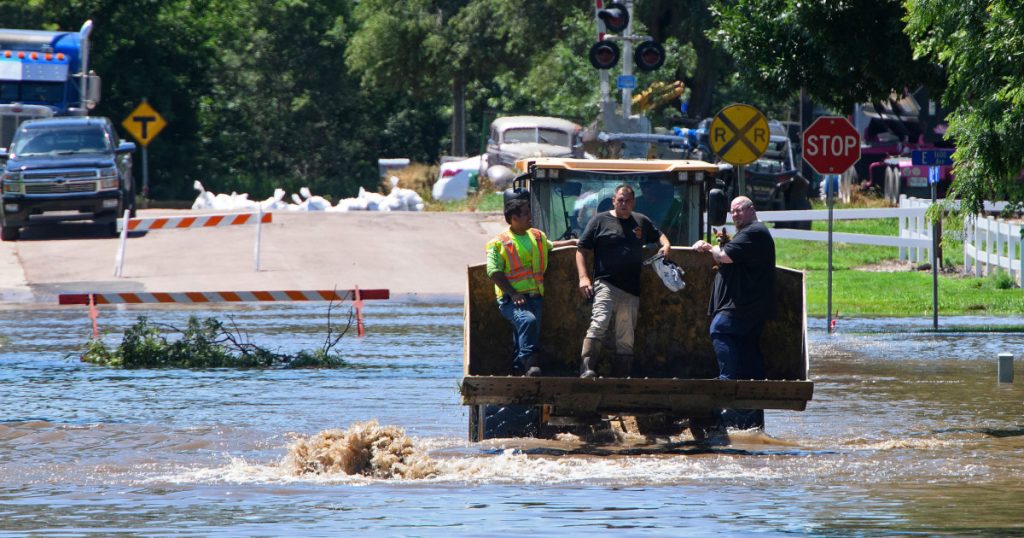Over the weekend, portions of Iowa were struck by historic flooding that caused severe and widespread devastation. The flooding was caused by a clash of precipitation drawn from the Gulf of Mexico and a cool, low-pressure wave moving from west to east, resulting in nearly 2,000 properties being damaged and prompting evacuations and disaster declarations. The flooding was exacerbated by overflowing rivers flooding dry communities downstream, contributing to the fast and widespread flooding in the northwest corner of Iowa.
The heavy rainfall over the weekend led to saturated ground, making the flooding in many areas fast and widespread. The rain and river swelling broke flood level records at 16 locations in Iowa, impacting cities like Des Moines, Rock Valley, and Little Sioux. More than 1,000 Iowans needed shelters, 1,900 properties were damaged, and hundreds of residential properties were destroyed. Some cities faced clean water system failures and sewage problems as a result, leading to disaster declarations covering 25 Iowa counties.
The city of Spencer, with a population of over 11,000, was cut off from the rest of the state due to floodwaters, leading to evacuations and rescues by first responders and neighboring departments. The city faced a nighttime curfew, with authorities expecting to check on residents once floodwaters recede. A person was reported missing, and officials worked to assess the damage caused by the flooding. In South Dakota, Gov. Kristi Noem declared a statewide emergency in anticipation of further flooding along the Big Sioux River.
Despite the challenging conditions, authorities expressed confidence in the recovery efforts. Officials in Iowa and South Dakota urged residents to stay vigilant as the threat of severe weather remained. Upstream rainfall and river cresting were major concerns, with the Des Moines River in Humboldt forecasted to reach record levels. Meanwhile, heat alerts were issued for around 95 million people in the United States, with high temperatures expected across various regions, highlighting the contrasting weather patterns occurring across the country.
As federal forecasters warned of the possibility of more severe thunderstorms and flooding in northern Iowa and surrounding states, emergency management officials acknowledged the persistent nature of the weather conditions. The clash between cool waves from the West and warm, moist air over the Great Plains and Midwest signaled the potential for continued severe weather events. Despite the challenges posed by the flooding and severe weather, officials expressed readiness and determination to address the ongoing impacts and facilitate recovery efforts in the affected regions.


